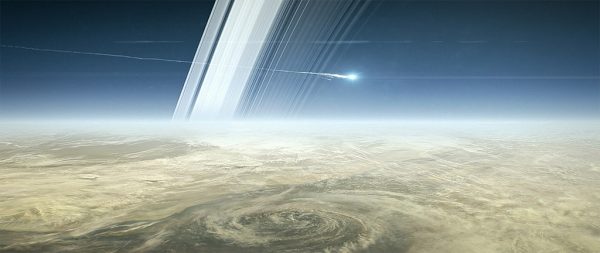The tale of one of NASA finest missions
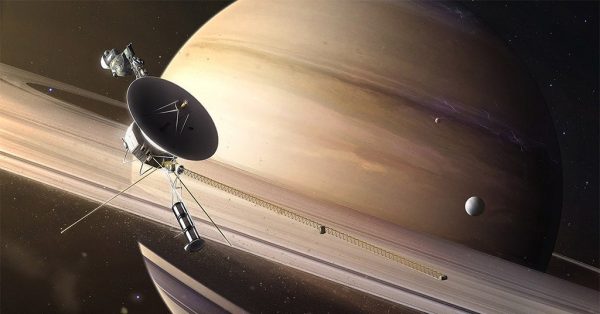
The Cassini – Huygens mission to Saturn, was a mission that is very close to my heart as it was the first mission I followed from launch to its fiery end on the 15th of September. I can remember watching the BBC documentary “The Planets” in awe as Carolyn Porco, the leader of the mission’s Imaging Team, described the amazing things the Cassini – Huygens team were hoping to finally prove.
Cassini – Huygens was a joint NASA-ESA mission and the first mission to purely study the Saturn system. The spacecraft is named after the 17th-century Italian astronomer Giovanni Cassini who discovered Saturn’s moons Iapetus, Rhea, Tethys and Dione and noted the division of the rings of Saturn, while the planetary probe Huygens was named after the 17th-century Dutch astronomer Christiaan Huygens who studied Saturn’s rings and discovered Saturn’s Moon Titan.
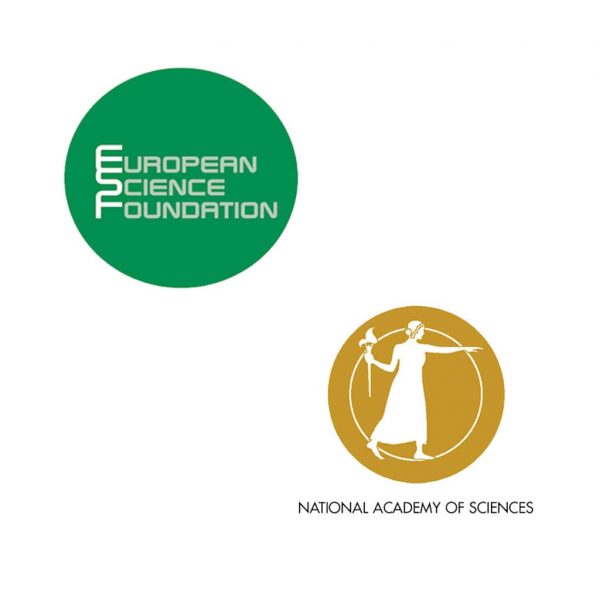
The urge to go back to Saturn with a mission purely designed to study it begun straight after NASA got the images and data sent back from Voyager 1 when it flyby Saturn and its moon Titan on the 12th of November 1980. In 1982, the European Science Foundation and the American National Academy of Sciences worked together to investigate future cooperative missions. Two European scientists suggested a paired Saturn Orbiter and Titan Probe as a possible joint mission.
That study would enable NASA and the European Space Agency to perform a joint study of the potential mission from 1984 to 1985. The collaboration on the Cassini – Huygens mission improved relations between NASA and ESA which had become strained due to European perceptions that NASA had not treated it like an equal during previous collaborations, but it also helped Cassini – Huygens survive congressional budget cuts in the United States in both 1992 and 1994, with NASA persuading the U.S. Congress breaking further space exploration promises might spill over into other areas of foreign relations.
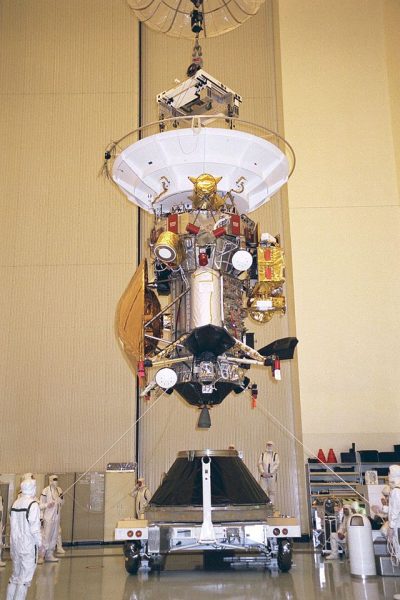
At launch, Cassini weighed in at of 5,600 kg with only the two Phobos 1 and 2 spacecraft sent to Mars by the Soviet Union weighing more. It was roughly the size of a school bus and was powered by plutonium, with the heat from the plutonium’s radioactive decay being turned into electricity. Cassini has 1,630 interconnected electronic components, 22,000 wire connections, 14 kilometres of cabling and its CPU is from 1980.
It takes 68 to 84 minutes for radio signals to travel from Earth to the spacecraft, and vice versa. This means ground controllers cannot give “real-time” instructions for daily operations or for unexpected events. Even if the response were immediate, more than two hours would pass between the occurrence of a problem and the reception of the engineers’ response by the satellite.
Due to the use of plutonium Environmental groups were unrelenting in organising rallies of 1500 people at Cape Canaveral in the lead up to the launch with several prominent disarmament leaders speaking. They received publicity from CNN and the NBC local affiliate, as well as print journalists and radio stations which were more than happy to fan the flames. Because of these protests, the scientists and people related to spacecraft had to be bused into the Kennedy Space Centre at Cape Canaveral in bus destined to “Somewhere Special”
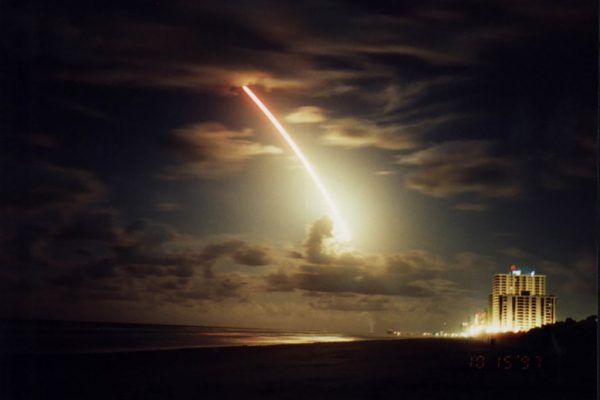
With the successful launched on the 15th of October 1997 on top of the mighty Titan rocket from Cape Canaveral and Cassini on its way to Saturn, a journey that would take it more than 3 billion kilometres and 7 years for a rendezvous with Saturn on the 1st of July 2004. The journey two gravity assists of Venus in April 1998 and July 1999, one of Earth August 1999, and one of Jupiter in December 2000 to gain the speed needed to get to Saturn
Three years into the journey through a major problem was discovered. When the Huygens probe landed on Titan, it needed to use Cassini to be a relay to send the data back to Earth, but during a communication test with an Earth-based radio telescope pretending to be the Huygens probe sending date to Cassini, it was found that the scientists wouldn’t be able to get the data back from the Huygens probe. What was happening was that the Huygens probe was transmitting on slightly off the frequency that Cassini was listening to. The Huygens team went to work and the chosen solution was to release Huygens probe not on the first orbit of Saturn but on the third. This would change the geometry between Huygens and Cassini by just the right amount to bring them back into synchronisation.
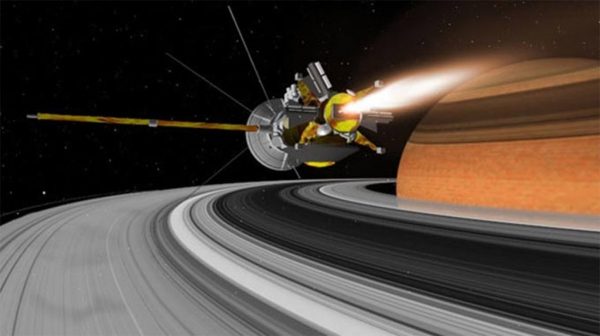
Then the big day finally arrived, with Cassini entering the Saturn system and performing a long burn with its main rocket so it could enter orbit around Saturn. You can forgive the Cassini – Huygens teams for being nervous as the spacecraft fired its engine as a couple of spacecraft have blown up when they arrived at their destination and turned the engine on and it only got worse as Cassini had to cross the Saturn’s ring plane between the F and G ring which could damage as well if there was any debris in the spacecraft path but to great relieve they found that region to be very clean.
On Christmas day 2004 at 2 am UTC time, Huygens separated from Cassini and it started its 20-day journey to Titan. Titan is the largest moon of Saturn and it’s the only moon known to have a dense atmosphere. It’s also the only object in space other than Earth where clear evidence of stable bodies of surface liquid has been found. Titan is 50% larger than Earth’s Moon, and it is 80% more massive. It is the second-largest moon in the Solar System, after Jupiter’s moon Ganymede, and is larger than the smallest planet, Mercury. The atmosphere of Titan is largely nitrogen; minor components lead to the formation of methane and ethane clouds and nitrogen-rich organic smog which gives Titan its yellowish hazy atmosphere.
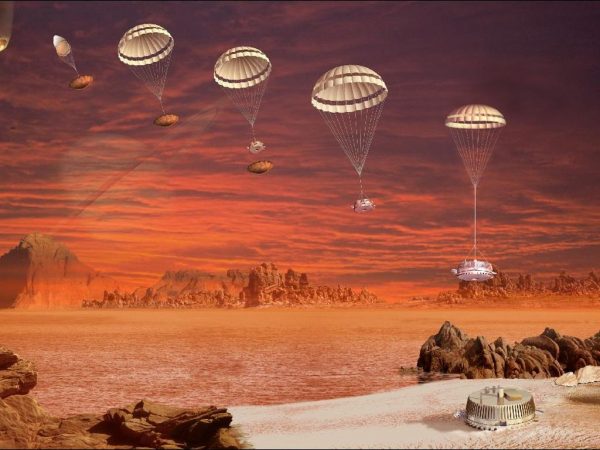
Once released that was it, Huygens was on its way to Titan and you couldn’t fix any mistakes in its path if something one wrong. Huygens would hit the top of Titan’s atmosphere at more than 7 kilometres a second, over the next two minutes it would slow down to 400 metres a second at which point Huygens 6 instruments would be turned on and it would release the first of three parachutes which would allow the probe to float down to the surface at a gentle speed.
At 10:30 am Earth-based radio telescopes recorded the faint recordings of the probe telling them it was alive and floating to the surface, but the scientists would have to wait until 16:25 pm for Cassini to send the scientific data back to Earth. As they got closer to the Huygens team noticed people in the control room were getting a bit tense. Discussion over the comlink revealed that there was a missing command and they knew that this would mean some loss of date. 16:25 pm came and went and nothing. Imagine the feeling of thinking the last 17 years have come to nothing. But 6 minutes later than expected the data finally arrived, the probe had been floating for 2 hours but would it survive landing?
Huygens survived the landing and it ended up recording about 3 and a half hours of data before the batteries ran out. From the penetrator data, the probe had hit something hard like a crust and then after that, the material below is much softer, a little like Crème Brulee which lead to a UK paper running with the frontpage headline “Scientists Get Just Deserts”. But the real prize was to come. The picture of the surface of Titan.
 |
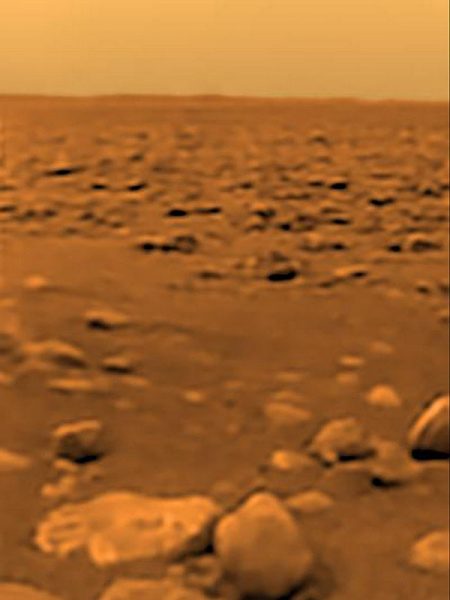 |
The probe showed that the surface of Titan is incredibly varied, they are areas that look like Earth. There are lakes and seas of liquid hydrocarbon (such as methane and ethane) in Titan’s northern latitudes, some larger than the Great Lakes of America. Titan atmosphere has a stratosphere, troposphere and weather as rains methane and ethane which carves of channels and gullies. Huygens also directly sampled aerosols in the atmosphere and confirmed that carbon and nitrogen are their major constituents. Cassini’s numerous gravity measurements of Titan also revealed that this moon is hiding an internal, water and ammonia ocean 55 to 80 kilometres beneath its surface.
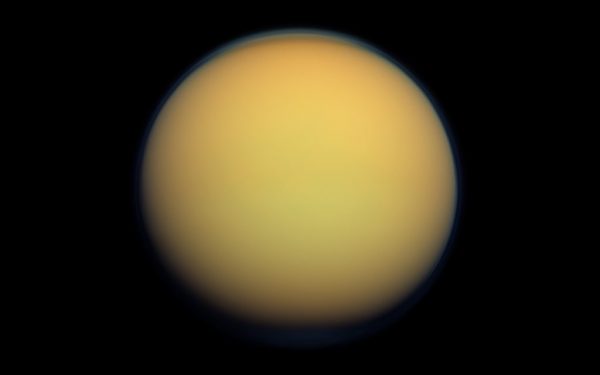 |
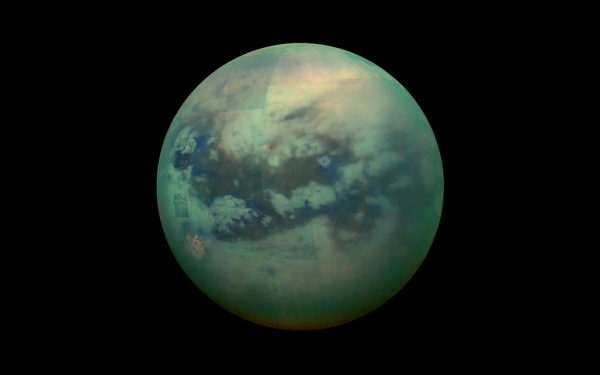 |
Other discoveries made in the first few years at Saturday includes the announcement on the 28th of June 2004 that Cassini scientists had measured of the rotational period of Saturn and they found the radio rotational period has changed since it was first measured in 1980 by Voyager 1 and it was now 6 minutes longer. This new data agreed with the latest data measured from Earth with the thought being that the change was due to movement of the source of the radio emissions to a different latitude, at which the rotation rate is different.
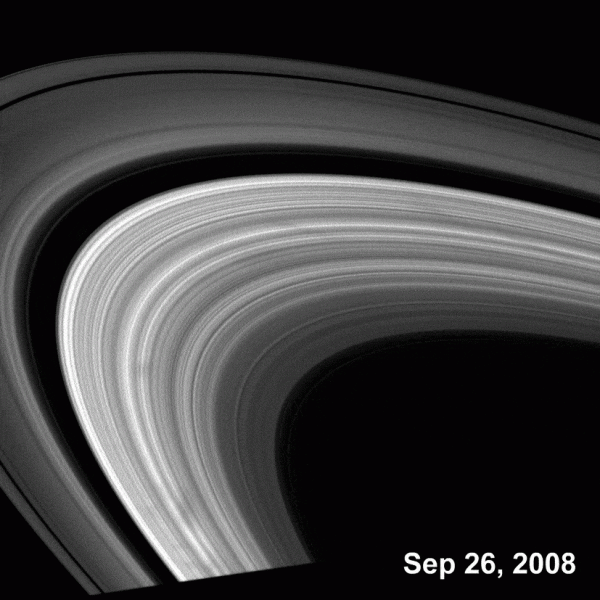
In images captured on the 5th of September 2005, Cassini detected and verified spokes in Saturn’s rings. Spokes appear dark in backscattered light, and bright in the forward-scattered light. which flare out like spokes on a bicycle wheel. While first thought to cause by gravitational interactions with the planet, moons or ring material, but it’s now been suggested that electrical disturbances might be caused by either lightning bolts in Saturn’s atmosphere or micrometeoroid impacts on the rings. The spokes also appear to be a seasonal phenomenon, disappearing in the Saturnian midwinter and midsummer and reappearing as Saturn comes closer to the equinox.
Cassini would also go onto to confirm the existence of the awe-inspiring hexagon shape mega-storm on the top of Saturn. Nothing like this storm has ever been seen on any other world, with the structure of the storm including a churning storm at its centre that is about 32,000 kilometres wide, and thermal images from Cassini showing that it reaches roughly 100 km down into Saturn’s atmosphere. Cassini found that at each point of the hexagon there were mini storms that would speed the clouds and wind to the next storm. Between 2012 and 2016, the hexagon changed from a mostly blue colour to more of a golden colour. One theory for this is that sunlight is creating haze as the pole is exposed to sunlight due to the change in season. It was previously noted that there was less blue colour overall on Saturn between 2004 and 2008.
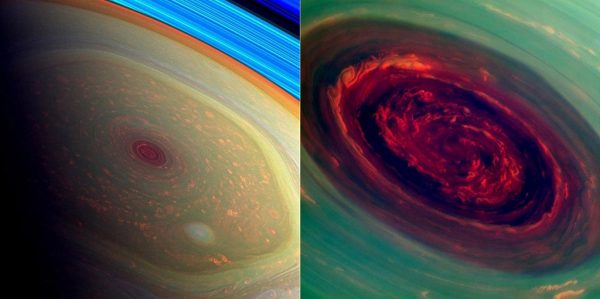
For a mission designed to reveal the mysteries of Saturn and Titan, Enceladus a small moon which is small enough to fit within the length of the United Kingdom really threw a spanner in the works. During the first two close flybys of the moon, Cassini observed water ice geysers erupting from the south pole of Enceladus, which it was supplying the particles in Saturn’s E ring. Mission scientists began to suspect that there may be pockets of liquid water near the surface of the moon that fuels the eruptions and redesigned the mission to put a greater emphasis on Enceladus.
On the 12th of March 2008, Cassini made a close flyby of Enceladus and passing through the plumes of the geysers and detecting water, carbon dioxide and various hydrocarbons with its mass spectrometer. Finally, on the 3rd April 2014, NASA finally revealed the evidence of a large salty internal ocean of liquid water in Enceladus. The presence of an internal salty ocean in contact with the moon’s rocky core places Enceladus with Jupiter’s moon Europa “among the most likely places in the Solar System to host alien microbial life”
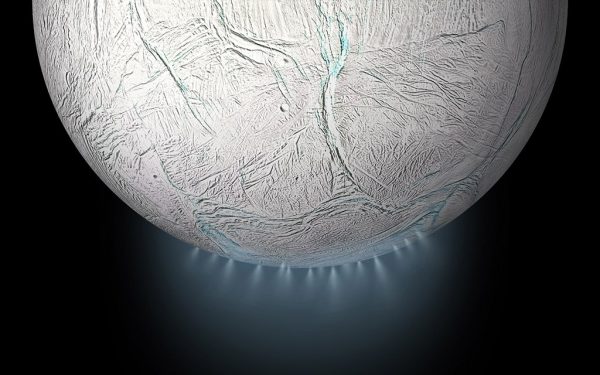 |
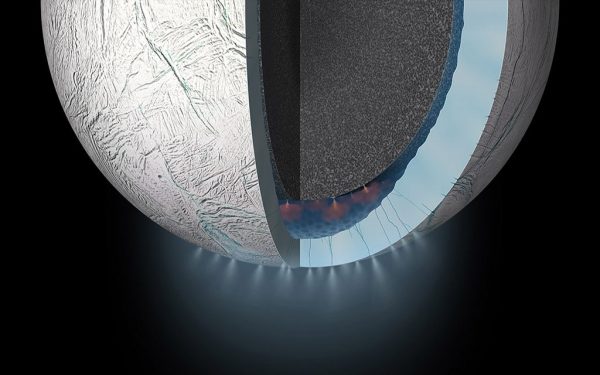 |
With Cassini’s mission being in its 19th year it had taken a beating over the years due to the radiation coming Saturn, its propellant running low and its RTG generator running out of juice, NASA sent Cassini into a series of close Saturn passes, approaching within the rings on a path to enter Saturn’s atmosphere on 15th of September 2017 which destroyed the spacecraft to prevent biological contamination of the moons Titan and Enceladus.
The Cassini mission was one of NASA most successful mission with more than 250 scientists worldwide having studied the data collected. The Cassini spacecraft had discovered seven new moons, sent home more than 450 gigabytes of scientific data which included more than 300,000 images and researchers have published more than 2,500 papers based on Cassini data. Looking up at Saturn in the sky the last couple of days realising that Cassini is now part of Saturn and there won’t be a mission there for a long time is very painful, but at least we’ll have all the beautiful image of the supermodel of the Solar System from Cassini.

